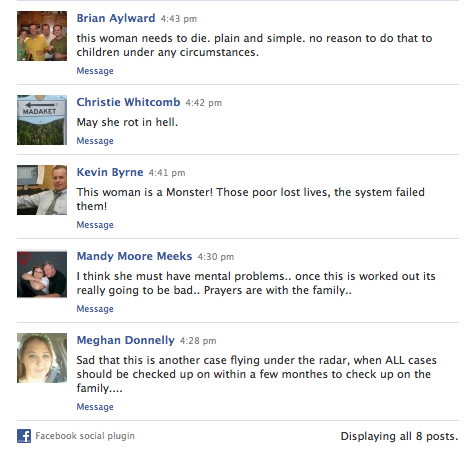A week ago, Mizzou’s men’s basketball coach, Mike Anderson, left to take the same position at Arkansas. And in the past week, there’s been a lot of speculation about who will become my alma mater’s new head coach. Mizzou went hard after Purdue’s coach, Matt Painter. Today, it looked like MU was going to sign him to a contract. I was following it all on Twitter. I had a column up in TweetDeck delivering every tweet related to Painter. They filed in, sometimes by the second. When the St. Louis Post-Dispatch reported that Painter had agreed to sign with Mizzou, Tiger fans started celebrating. Purdue fans, meanwhile, were pissed. When KOMU-TV in Columbia said the deal was 100% done, things got even more charged. Tweets were tweeted that I wouldn’t want to republish here.
And then, in 20 minutes, it all changed. One Indianapolis outlet reported Painter was staying. Then ESPN said so. Then CBS and FOX Sports. Then Purdue announced, officially, that the contract was done.
The tweets turned around. The Purdue fans were relieved. The Tiger fans were pissed.
After it was all over, I started thinking about a friend of mine, who was on a flight from Chicago to D.C. this afternoon. That’s a two-and-a-half hour flight. In the time between takeoff and landing, he missed an entire stream of emotions and news. While he was in the air, the story went one direction, then 180ed and went the other. The life cycle of the story started and ended in less time than wheels up to wheels down. When he landed, the story was already over. Like, over. Dead. Forgotten. By tomorrow, outside of Columbia, Mo., and West Lafayette, Ind., nobody will pay any attention to what’s just happened. The news will be less than 12 hours old, with emphasis on the old.
❡❡❡
So here’s a thought. It’s not scary or frightening or dangerous to our democracy. But I think it’s something worth considering.
It’s this: We don’t have news cycles anymore. We used to. We had news cycles where topics dominated the news and then faded out in favor of other topics. We had news cycles that lasted long enough for the public to learn about the topics of the day and make decisions about them. We had news cycles where what was in Tuesday’s Washington Post was probably still headline news on Sunday’s “Meet the Press.”
We don’t have that anymore. But we did, as recently as a decade ago.
I know, because, well, TV told me so. I was just watching a “West Wing” episode — Season 1, Episode 21: “Lies, Damn Lies, and Statistics.” It aired on May 10, 2000. In it, Rob Lowe’s character, Sam Seaborn, is photographed by paparazzi late at night while giving a graduation gift to a friend. The friend happens to be a call girl, and Sam’s a speechwriter for the President. Sam doesn’t see the paparazzi, but he does see a car rush away from the scene, and he’s suspicious. His worried about what a photo could do for the President’s public image. He calls C.J. Cregg, the President’s press secretary, to tell her what he’s seen.
Here’s the conversation that ensues the following morning between Leo McGarry, the President’s chief of staff, and C.J.:
LEO: How do you not tell me until this morning?
C.J.: Leo…
LEO: How do you not call me last night?
C.J.: We didn’t know anything last night.
LEO: Sam called you.
C.J.: That’s right. He met the girl and saw a suspicious car. I’m not going to call up the White House Chief of Staff in the middle of the night because someone started a car.
LEO: C.J., if it was…
C.J.: I was handling it, Leo. It took me three hours to confirm there was a picture, and another hour to find out who has it.
LEO: Who has it?
C.J.: The London Daily Mirror. They paid a waitress friend of hers $50,000 to set it up and confirm that she was a call girl.
LEO: When is it running?
C.J.: It’ll run later today. American press has it tomorrow morning.
In May of 2000, that was a realistic conversation. It wouldn’t be today. The obvious thing is that once the British paper got the photo, they wouldn’t be waiting for the presses. They’d have the photo online, and then everyone would have the photo. You’d wake up and it’d be staring back at you from your Facebook news feed.
There’s one another thing that wouldn’t happen today: If the President’s press secretary was lucky enough to find out in advance about scandalous news — say, if a USDA executive made controversial, on-the-record remarks — the White House would be barely ahead of the news cycle. But mostly, the news cycle is ahead of the actual newsmakers. Something is said, something is known, the public learns of it, the public renders its verdict on the news, and perhaps only then would the C.J. Creggs of the world have a chance to comment on it. The story is revealed in parts, often haltingly, and often without all the details. By the time the full story surfaces, the news cycle is already over.
❡❡❡
So, no, we don’t have news cycles anymore. We have moments. They start and they end faster than we can even process. A government’s overthrown in Egypt; we watch, and we forget. Japan’s hit by a tsunami, and it’s out of the news two weeks later. Libya’s being bombed, Iraq and Afghanistan are still at war, Sudan’s splitting apart, the economy’s slumping, the Chinese are doing God-knows-what with our money, the price of oil is rising, the dollar is falling, the cherry blossoms are blooming and the Nationals still don’t have an Opening Day starter. All moments. There are all these moments happening around us, all in real time, and we’re able to actually watch them pass and disappear behind us. You can sit there at your computer screen and actually watch the moments pass, in one eye and right out of sight.
I know, because today, I sat with a TweetDeck column open for the words “Matt Painter,” and I watched them pass.
It’s sad that that “West Wing” episode is hopelessly antiquated, because it’s only a decade old. Here’s a better example for our modern news cycle. It’s actually a quote from “Top Gun.” It’s from that fight scene at the end of the movie. Tom Cruise has just taken off from the flight deck in the Indian Ocean. Val Kilmer’s going one-on-five versus the Russian MiGs. The captain of the ship wants to launch additional planes into battle. And here’s what he’s told:
Officer: Both catapults are broken, sir.
Stinger: How long will it take?
Officer: It’ll take 10 minutes.
Stinger: Bullshit, 10 minutes! This thing will be over in two minutes! Get on it!
In Internet time, hours feel like days, and days feel like weeks. The web isn’t killing our brains, but it is killing our internal clocks. When the world is on demand, anything delivered less than instantaneously is an eternity.
That’s what we’re up against today. It used to be that there was no time like the present. No longer. Today, there’s only time like the present. If it’s not happening now, it’s barely happening at all.
What we really need to learn is patience. But where will we find the time?












 The big news out today is that
The big news out today is that